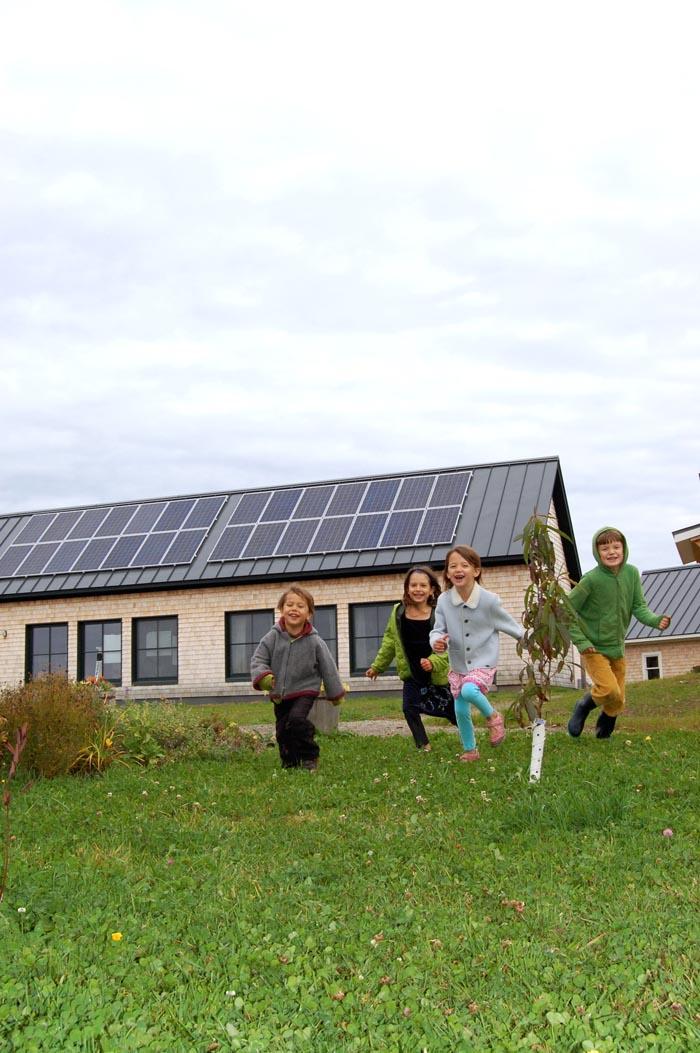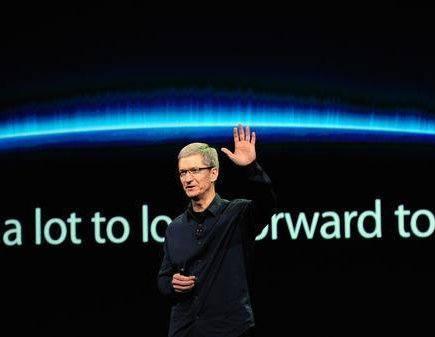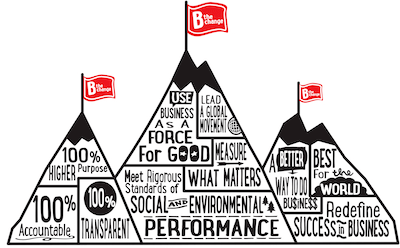Cloud-Based Solar Robotics Platform Cleans PV Panels Without Water


From sustainable agriculture and water resource management to solar photovoltaics, Israeli companies have been at the forefront of developing new means of forging sustainable societies amid harsh and changing conditions. A strong, homegrown clean tech venture capital community is helping innovative young Israeli clean-tech companies make their mark locally and in markets around the world.
A drive on the part of solar PV industry participants to reduce balance-of-system (BoS) and “soft” costs is underway as governments in key markets such as the European Union and U.S. cut back or eliminate renewable energy R&D funding, tariffs and other incentives.
Operations and maintenance (O&M) makes up a significant portion of running solar PV power generation assets. According to a study conducted by the National Renewable Energy Laboratory (NREL), fixed O&M costs for solar PV systems ranging from 1 to 10 megawatts averaged $20 +/- $10 per kilowatt-hour of energy in 2013.
Aiming to boost efficiency as well as drive those costs down significantly, Israeli clean tech startup Ecoppia has developed a high-tech means of cleaning and maintaining solar PV panels on a utility scale. Ecoppia's solution comes in the form of a cloud-based solar robotics platform that's not only highly efficient and effective, but also energy-independent and water-free. That's an important attribute not only in arid and desert regions, but also anywhere in the world where pressures on water resources threaten or may threaten water supplies.
Fully automated, self-sustaining and water-free solar panel cleaning
Accumulating on solar PV panels, dust, grit, snow and other unwanted material can degrade the performance of solar PV systems significantly. Empirical studies indicate that keeping solar panels free of dust, dirt, grit, snow and other obscuring materials can boost PV systems performance anywhere from 3 to 40 percent, Ecoppia CEO Erran Meller said in a 3p interview.
By and large, solar PV systems owners and operators continue to clean solar panels the old-fashioned way: employing large maintenance teams to douse them with soapy water, rinse them, then use squeegees to wipe away what remains. Harnessing the power of cloud computing, real-time wireless telecommunications and the latest in dry, fully-automated and chemical-free cleaning technology, Ecoppia's solar robotics solution seems space-age by comparison.
Ecoppia's fully automated E4 solar panel-cleaning platform has been proven in the field to remove 99 percent of the dust and other obscuring materials accumulated on solar panels each day. That translates into big, year-round gains and the ability to optimize electricity output, Meller told 3p.
Solar robotics, the cloud and microfiber fabric
Ecoppia's self-sustaining E4 solar robotics platform is equipped with its own solar PV panels, making it energy-independent. Rather than relying on water, the system relies on three key elements to clean solar panels much more efficiently and effectively than conventional means: gravity (PV panels' angle of inclination), air flow and a microfiber fabric that has been proven to remove particles down to mere microns in size.
Being cloud-based, the Ecoppia E4 collects, analyzes and acts on a variety of data. Its system controller pulls in data from sources including the Weather Channel “to identify optimal operating conditions and deploy robotic cleaning hardware as needed,” Meller explained.
To date, Ecoppia's solar robotics platform has been used to clean nearly 4 million solar panels, including those at Israel's first commercial solar energy project, the Ketura Sun solar PV field. Owned and operated by Arava Power, the 4.95 MW installation is located on Kibbutz Ketura in southern Israel's Arava Valley.
Working with Siemens – then a part owner of Arava Power – Ecoppia pilot-tested its cloud-based solar robotics cleaning platform over a three-year period. Siemens was relying on large maintenance teams and copious amounts of distilled water to clean solar panels about 10 times a year. “They were looking worldwide for a more efficient, cost-effective solution,” Meller recounted.
Water-free and energy-independent, Ecoppia's E4 solar robotics system cleans the PV panels at Arava Power's solar park on a nightly basis. Radio-frequency communications are used to gather data that's run through E4's predictive analytics software, Meller explained.
Resulting instructions are relayed as needed from the system's control unit to client robots that do the cleaning. All the data is sent via GSM for storage in the cloud. That enables it to be accessed and acted on via the Ecoppia E4 platform's front-end software on laptops, tablets or smartphones either on-site or from remote locations.
Unprecedented PV data-gathering, communications and analytics
These data-gathering, processing and communications capabilities drive a continuous process of PV maintenance system assessment and scheduling that entails 30-minute checks on the robotics system's batteries. Over time, the platform's on-site master control unit essentially learns how to optimize maintenance and overall system performance, Meller said.
Banks and investors require rigorous independent testing and evaluation of the technology and systems used to operate and maintain solar PV generation assets in order to finance projects, Meller pointed out. “Banks may grant as much as 80 percent collateral on loans to developers. They're very risk-averse; their only collateral are the PV panels and systems. There's lots of due diligence involved.”
As far as Ecoppia is aware, its E4 solar robotics cleaning system is the only one to have been approved by PI Berlin and banks. “PI simulated 15,000 cleaning cycles on each and every panel from nine manufacturers – that's the equivalent of 20 years of nightly cleaning,” Meller elaborated.
Those simulations involved assessing the prospective effects of 900 dust storms, about 45 per year. At the end of the day, PI Berlin found zero in the way of energy conversion efficiency losses and no micro-cracks over the 20-year period.
Looking ahead, Ecoppia anticipates completing installations of its self-sustaining, water-free platform at five recently-signed Middle East project sites in the first quarter of 2015. By then the Israeli clean-tech startup expects to be cleaning 5 million PV panels a month. “I'd guess that even the largest manual solar panel cleaning company in the world isn't cleaning 10 percent of that number,” Meller stated.
*Images credit: Eccopia, Arava Power
Could Sportswear Be the Tipping Point for Sustainable Apparel?


Editor's Note: This post is part of an ongoing student blogging series entitled The Business Of Sports & Sustainability. This “micro-blog” is the product of the nations first MBA/MPA certificate program dedicated to sustainability in the sports industry. You can follow the series here.
By Jill Stoneberg
For several years leading sports apparel brands, including Nike, Adidas and Puma, have touted the use of sustainable manufacturing practices and recycled materials. From Nike shirts made from waterless dyes, to certified cradle-to-cradle shoes made by Puma, sportswear has taken great sustainability strides. Needless to say, this shift to integrate product creation with sustainable design principles has not emerged solely for the altruistic purpose of saving the planet. Nor has it been driven solely to realize cost savings associated with less resource-intensive manufacturing practices.
Rather, sustainability for some sports apparel companies has been embraced and marketed to spur innovation and deliver superior products. As a result, apparel manufactured with sustainability in mind is becoming increasingly available in the sportswear industry. Avid sports fans, as well as consumers who wear casual sports attire, are each connected to the sustainable apparel movement -- even if they are not consciously aware of it.
Perhaps the environmentally preferable material most recognizable to the consumer is recycled polyester, which is made from recycled PET bottles. Today recycled polyester can be found in products ranging from the fleece pullover to high-end performance attire and professional uniforms, such as those worn at the Olympics and World Cup.
High-profile sporting events reach millions of people and, along with corporate sponsors’ brands and products, influence spectators and fans around the globe. While some events and teams choose to promote their sustainable threads, others fly under the radar.
Basketball uniforms and tracksuits sponsored by Nike at the 2012 London Olympics featured recycled materials and were actively marketed as green, innovative and designed to enhance athletic performance. The Nike tracksuit, for example, featured the use of recycled plastic and a design that reduced drag -- having the potential to shave off fractions of a second from an athlete’s race.
Perhaps the most recent news splash around the use of recycled PET fabrics by a sports team was made by the Detroit Lions this past August. The Detroit Lions, an NFL team from Detroit, Michigan, announced that their practice jerseys would be made with Repreve, a recycled PET fabric supplied by Unifi. Each practice jersey is made from 21 plastic bottles. This commitment is linked to the team’s “Turn It Green” marketing campaign and is designed to boost fan awareness about the team’s ambitious 100 percent recycling goal at its stadium.
In contrast to the active promotion of events and teams: Who knew that the entire NBA league has been sporting sustainable threads since 2010? Adidas, the current uniform sponsor of the league, released its Revolution 30 design in 2010 -- a product line that has been recognized for having 60 percent recycled material content, is 30 percent lighter, and keeps athletes cool and dry in half the time than other materials. Additional brands, including Athleta, are known to incorporate sustainable fabrics in their products -- but don’t actively market that attribute apart from the garment label.
The sportswear industry’s focus on merging ecologically-sensitive innovation with superior performance has instigated a shift that is making sustainable apparel mainstream. This could be a tipping point for the apparel industry as a whole.
Sports apparel is one of the leading growth segments in apparel. According to NPD Group, growth in the sportswear segment is fueling overall growth in the apparel industry. From June 2013 to July 2014, sports apparel made up 16 percent of total apparel sales, and grew by 7 percent from the previous year. In contrast, the total apparel industry grew by 1 percent.
With leading brands such as Nike incorporating sustainable fabrics and manufacturing practices into their products, the average consumer is probably unaware of the environmental performance of the products they are buying. Through sponsorship of collegiate and professional teams, trusted sportswear brands are influencing millions of consumers around the world. Next time you are getting dressed to hit the gym, take a peek at the fabrics on the garment label -- you just might be giving some plastic bottles a second life.
Image credit: Flickr/indywriter
Jill Stoneberg is a Sustainability Manager where she focuses on sustainability strategy, goal setting and tracking, reporting, and customer and employee engagement. Jill holds an MBA from Presidio Graduate School. Follow her on twitter @JillStoneberg.
Solar LED Lamps Enhance Literacy, Livelihoods Around the World


Joining a list of legendary physicists that includes Max Planck, Albert Einstein, Enrico Fermi and former Obama administration Energy Secretary Steven Chu, physics professor Shuji Nakamura was one of three physicists who shared in the 2014 Nobel Prize for Physics. The Royal Swedish Academy of Sciences in October awarded this year's physics prize to Nakamura, of University of California, Santa Barbara, and Nagoya University's Isamu Akasaki and Hiroshi Amanao for their invention of the blue light-emitting diode (LED).
Enabling LEDs to produce white light for the first time, the invention of the blue LED in the late 1990s paved the way for a revolution in lighting. As is often the case with such groundbreaking innovations, the three physicists' invention led to a rising tide of interest and efforts to build on their work.
While Nakamura continues his research as a materials professor and chair of the Cree Center for Solid State Lighting and Displays, his innovation has been embraced at UC Santa Barbara and in the Santa Barbara community. Nonprofit Unite to Light is leveraging LED lighting, as well as the work of other university researchers in developing more efficient solar photovoltaic (PV) cells and battery technology, to deliver solar-powered LED lamps to organizations working to improve living conditions in under-served, developing communities around the world.
Solar LEDs, shoestring budgets and sustainable development
The invention of the blue LED has led to the use of LED lighting across a wide and still growing range of applications – from consumer electronics and portable hand-held lighting devices to household, commercial, industrial and public lighting. LED lighting is much more energy efficient, as well as less resource-intensive and polluting, than conventional lighting. It's also cheaper to manufacture than incandescent and fluorescent lighting.
Unite to Light is bringing clean, reliable and affordable emissions-free lighting to a growing range of under-served communities in less-developed and developing countries. In doing so, the Santa Barbara nonprofit is creating opportunities for children, students and families to improve their lives and living conditions – all without the need for power grid access, costly infrastructure investments, greenhouse gas emissions or other forms of environmental pollution.
Unite to Light was launched as a result of a visit by Dr. Osei Darkwa and Pastor Karl Fosuhene to UC Santa Barbara's Institute for Energy Efficiency (IEE). Sponsored by Santa Barbara nonprofit Pangaea and the Goleta Presbyterian Church, Darkwa asked the Institute's researchers to develop an affordable reading light for children, students and families in Ghana. They took up the challenge with relish. Led by co-founders IEE Director John Bowers and Santa Barbara attorney Claude Dorais, Unite to Light was born.
Unite to Light operates on a shoestring budget with a full-time staff of no more than a few. Charitable donations, along with the generous efforts of a host of volunteers, including the UC Santa Barbara chapter of Engineers Without Borders, keep the nonprofit organization going.
To date, Unite to Light has delivered some 61,000 solar LED lamps to organizations and communities in some 65 countries, including Ghana, Guatemala, Haiti, Kenya, Nicaragua, South Africa, Uganda and Zimbabwe, Executive Director Dawn O'Bar told 3p in an interview. “Many of them,” O'Bar pointed out, “have been hand-delivered, so we know they reached their intended recipients.”
Breaking the cycle of poverty
Unite to Light's solar LED lamps directly benefit a much larger number of people in under-served communities. Shared among families and friends, Unite to Light estimates its solar LED lamps have a multiplier effect of three to four, which means that on the order of 250,000 people benefit directly from their use.
Affordable, reliable and emissions-free, Unite to Light's solar-LED lamps are helping to improve the literacy, education and lives of developing-world students, families and communities. Just one among the examples O'Bar cited during our interview, Unite to Light's solar LED lamps are changing lives and the environment for the better in a rural South African community.
Unite to Light delivered some 3,000 of its solar LED lamps, along with refurbished Amazon Kindles, to students living in a rural community that lacks grid access in the province of KwaZulu Natal. The use of solar LED lamps coincided with a 30 percent year-to-year increase in students' scores on a national matriculation exam in the first year following their introduction, O'Bar recounted.
Literacy, better lives and livelihoods
Unite to Light's solar-LED lamps are having numerous positive benefits that extend well beyond its primary goals of improving literacy and education, and alleviating poverty, in less-developed and developing-country communities.
Significant in terms of improving health, safety and ecosystems conservation, the nonprofit is reducing the use of kerosene lamps and burning wood for light. That means less in the way of smoke and carbon dioxide emissions that cause health and safety problems throughout the developing and less-developed world. It also means less in the way of deforestation, which helps conserve the dwindling forests and waterways.
Much remains to be done in order for developing and less-developed countries to be able to take advantage of advances in clean energy, energy-efficient LED lighting and energy storage technologies. It will also take a while for these communities to forge sustainable development pathways that don't require ecosystems destruction and the depletion of their natural capital and resources.
It's estimated that some 1.5 billion people worldwide lack access to a reliable source of electricity. Some 14,000 students in the KwaZulu Natal community where Unite to Light has delivered some 3,000 solar LED lamps still lack access to a reliable source of electricity, O'Bar noted.
Cheaper and more efficient than ever, solar energy devices, appliances and equipment, along with other locally-appropriate forms of renewable energy, afford developing and less-developed countries the opportunity to “leapfrog” ahead and break the cycle of fossil fuel dependence, natural resource extraction and foreign debt that has consumed their natural capital and weighed them down.
Nonprofits and the "overhead myth"
For its part, Unite to Light is looking to expand, as well as refocus its activities on a smaller number of countries, key issues and interest groups by developing partnerships with other like-minded organizations involved in mutually supportive endeavors. With public- and private-sector funding tight as ever, the Santa Barbara nonprofit is exploring ways to assure its financial sustainability.
The common perception among the U.S. public is that a nonprofit should be able to do everything it aims and needs to do on a shoestring budget, simply by covering its overhead from charitable donations and relying on the contributions of volunteers, O'Bar told 3p. Yet, like any sustainable enterprise, nonprofits, including Unite to Light, “have a lot of money invested in infrastructure, as well as the expenses associated with delivery of the end product or service to the people that need it.”
Dubbed by nonprofit insiders as the “overhead myth,” it's a conundrum Unite to Light is keen to resolve. At present, Unite to Light is wholly reliant on donors-- individuals and foundations – to sustain its operations. Though it prices its two models of solar LED lamps slightly above manufacturing and logistics, that still leaves a substantial budgetary shortfall. Buyers pay for shipping, customs charges and duties. As well as running contrary to its fundamental principles, building in a higher margin could jeopardize its ability to deliver affordable products to countries and communities where incomes can average $1 or less per day, O'Bar pointed out.
Unite to Light explored the possibility of registering as a certified B Corporation a couple of years ago, but its board “decided to hold off until all the ramifications – tax implications, etc. – were more more clear,” O'Bar recounted. “I expect we'll be revisiting the issue soon,” she added. “We might have to make the jump into the for-profit world, but significant issues need to be resolved.”
In addition to looking for ways to increase fund-raising, what Unite to Light is doing is making a greater effort to reach out and build alliances and partnerships with other like-minded non-profits and social enterprises such as the Clinton Global Initiative.
Through the Clinton Global Initiative, Unite to Light is participating in Commitment to Action, a project in Nicaragua that aims to provide 10,000 solar products to women in rural areas. Doing so opens up substantial new income-generating opportunities for these women, their families and communities, O'Bar explained.
Women in these Nicaraguan communities walk 2 to 3 hours to have their cell phones charged, wait in line for another hour or so, then walk the same distance back to their homes. Equipping them with portable solar power generators will not only free up this time, it will enable them to start small businesses in their own communities.
The economic, as well as human and environmental health and safety, benefits to these women are huge, O'Bar elaborated. “They're able to earn [60 cents] per day by charging cell phones ... Now, that's nothing to us, but it's significant to them, where those at the 'base of the economic pyramid' earn $1 a day.”
Unite to Light has also joined with U.S.-based Business Connect to roll out a project that entails distributing Unite to Light solar LED lamps with water filters. “It's a nice pairing – providing water and light,” she commented. Based in the U.S., Business Connect works with local distributors to deliver water filters across some 15 countries, “and they're expanding their business,” O'Bar noted.
*Images credit: Unite to Light
Belfast Ecovillage Completes Largest Community-Initiated Solar Purchase in Maine


Members of Belfast Cohousing & Ecovillage, a tight-knit community in Midcoast Maine, are experienced in working together. When a child is born or an illness strikes, members lend a hand and provide home-cooked meals. Sharing cars, child care and even house-swapping when life circumstances change are all common occurrences in this community, which values sustainability and multi-generational living. The recent 11-home community solar purchase was a perfect fit with the ecovillage culture.
All of the photovoltaic solar systems use Axitec 250-watt photovoltaic modules with Enphase microinverters, allowing members to receive wholesale rates on the purchase of the panels and components. They were drop-shipped, and onsite construction equipment for the common house and unfinished units helped transport the panels to each home. Customized rooftop safety equipment was reused, saving time and money.
"I think a community solar purchase was a great idea," says Hans Hellstrom, a member of Belfast Ecovillage and a participant in the recent solar project. "Not only is it good for keeping the cost down, but there was also a feeling of comradery. It also really supports [the Belfast Ecovillage] mission, working towards sustainability."
The 11 solar systems were installed by Capital City Renewables and two members of Belfast Ecovillage who were trained by the installation crew. The systems ranged in size between 2 and 5 kilowatts of capacity. Despite the Ecovillage homes being all electric (heat, hot water, cooking, etc), these homes are now near net zero.
"Because the homes are highly energy efficient and all electric, the community has the opportunity to generate all their own power and be truly net-zero," explains Kiril Lozanov, the Belfast Ecovillage member who organized the community solar purchase and vice president of Capital City Renewables. "One big advantage to electricity over other sources of energy is the ability to control its source."
All Belfast Ecovillage homes are built by GO Logic to the Passive House standard, although not certified. The high-performance homes use 90 percent less energy for space heating than a typical house. They contain SIPs (structural insulated panels) covered with blow-in cellulose in the walls; triple-pane windows and doors; a solar orientation; a Zehnder heat recovery ventilation system; and a high-efficiency roof.
Now, 22 of the 36 ecovillage homes have solar systems. Of these, 11 systems were installed previously and two of the 36 homes are currently unsold. At least two of these solar homes are net-zero -- a 1,500-square-foot home with a 4.5-kilowatt solar system and a 1,300-square-foot home with a 4.3 kW system. This means the solar systems generate as much energy as the homes use over the course of the year for heat, hot water, cooking, lighting and plug loads.
The layout of Belfast Ecovillage also encourages sustainability and energy conservation. Homes are clustered on 6 acres to preserve open space for wildlife, agriculture and recreation, and a pedestrian path (not a road) connects the homes. Despite the rural location, all homes are in two-, three- and four-unit dwellings.
An approximately 4,900-square-foot common house is under construction and will contain a shared kitchen, dining room, living room, guest bedroom, children's playroom and root cellar. Once complete, optional shared meals will be prepared weekly. By design, Belfast Ecovillage homes are smaller because all residents have access to this shared space, although all homes are complete, independent units with private bathrooms and kitchens.
"Residents of Belfast Ecovillage already share and barter many things, and we even collectively operate a 3-acre worker-share farm through our collective efforts," says Lozanov. "A community solar purchase was natural fit for us, because we often use community-minded thinking to save money, make life easier, or lessen our environmental impact."
Image credits: Sarah Lozanova and Steve Chiasson
Sarah Lozanova is a regular contributor to environmental and energy publications and websites, including Mother Earth Living, Green Building & Design, Triple Pundit, Urban Farm, and Solar Today. Her experience includes work with small-scale solar energy installations and utility-scale wind farms. She earned an MBA in sustainable management from the Presidio Graduate School and she resides in Belfast Cohousing & Ecovillage in Mid-coast Maine with her husband and two children.
Stories & Beer: Sustainability and the 50th NFL Super Bowl


We hosted our monthly Stories and Beer Fireside Chat on November 18th at the Impact HUB San Francisco – and online via web cam.
Few things short of religion capture as many people’s attention as major sporting events - with the National Football League's Super Bowl being amongst the greatest spectacles of them all. In 2016, the Super Bowl will celebrate it’s 50th anniversary at Levi’s Stadium in Santa Clara, California, and the team is already preparing to celebrate. A well thought-out strategy to “green” the event is underway and, perhaps more importantly, fans are now invited into a sustainability conversation like never before.
Our special guest at this Fireside Chat, Neill Duffy was Co-Chair of the Sustainability Sub Committee and Sustainability Advisor to the Super Bowl 50 host committee! Here's a recap of our conversation.
About Neill Duffy:
Neill has expertise and experience in the international sports and entertainment business gained at the highest level over the last 25 years. During this time, Neill has worked on both the agency and property side of the business and has held a number of executive leadership positions including that of President Octagon Worldwide EMEA . He has consulted to many major global brands in the financial services, automotive, retail and telecommunications sectors and worked across many major international sports events including the Olympic Games, FIFA World Cup, Formula One, IAAF and America’s Cup. Neill also has big event bid experience having been on the bid team for both the Cape Town 2004 Olympic Bid and San Francisco Bay Area Super Bowl 50 Bid.
Why Taking Care of Your Apparel Workers is Good for Business


When the collapse of the Rana Plaza factory took the lives of more than 1,100 garment workers in Bangladesh last year, the world’s eyes were fixed on what multinational apparel companies would do to ensure that a similar tragedy would not reoccur.
In the wake of the calamity, agreements to improve factory working conditions – such as the Accord on Fire and Building Safety in Bangladesh and the corporate-led initiative the Alliance for Bangladesh Worker Safety – were created, building retrofits and renovations were jump-started, and reparations were made. Notwithstanding the progress that Western companies, labor unions and local government continue to make to secure safe working conditions Bangladesh, several social enterprises are helping to advance the sustainability of the global apparel supply chain beyond safety compliance and toward a considered focus on business ROI and social impact.
The multi-trillion dollar global apparel industry – of which Bangladesh is the second largest garment exporter (after China) – employs about 25 million garment factory workers, 80 percent of which are women. Historically, the conditions at a factory such as Rana Plaza have been less than ideal: Workers endure low wages, long hours and unexpected changes in daily schedules. Even more, in most societies that are home to low-wage garment factories, workers are culturally discouraged to complain when working conditions are trying – especially if you are a woman. Unfortunately, those cultural barriers and lack of communication channels have often been costly for factories. (Evidence suggests that Rana Plaza could have been avoided if factory management had listened to worker concerns.)
Organizations such as LaborVoices work to prevent just that. Using basic mobile phone technology, LaborVoices provides a platform for garment factory workers from various countries (as well as workers in other industries) to provide real-time feedback about working conditions at specific sites: Employees can call or text a dedicated line 24/7, free of charge, to anonymously complete a brief survey and also have the option to leave a voice recording with anecdotal feedback. This valuable information is then shared with apparel brands and factory management to help them solve problems in their supply chain before they become bigger issues.
LaborVoices not only gives workers a voice, literally, and supports supply chain transparency – it’s also a useful business tool.
“We’re solving the worker’s problems, and by solving the worker’s problems we’re saving brands a lot of money,” said Ayush Khanna, product manager at LaborVoices. “At the end of the day, brands need to not only do this out of the kindness of their hearts, but [they] should be doing this because this is actually good for business. It means having less uncertainty, more visibility and more capability to correct issues before they get super critical.”
In one major garment factory in Bangladesh, for example, LaborVoices received more than 600 calls from about 200 workers during a two-week period. While the collective feedback confirmed that workers were being paid on time, some workers also shared that access to drinking water was not available during certain times of the day and that some workers noticed cracks along the walls and roof of the building. LaborVoices shared this anonymous feedback with factory management and was able to drive the following improvements for workers: Management refurbished the pumps used to supply water to the factory, thereby improving the water supply, and engaged engineers to survey the building to ensure structural safety.
This ongoing visibility into factory operations helps reduce the risk of supply chain disruptions – all of which mean dollars and cents for factory owners and client brands.
BSR's HERproject approaches worker well-being from a similar lens. In partnership with NGOs and global brands, HERproject implements women’s empowerment programs focused on women’s health and financial literacy in garment factories around the world, as well as farms and other types of factories. The two programs, called HERhealth and HERfinance, provide factory workers with opportunities to learn about general and reproductive health and financial capabilities – and also help female workers gain a healthy dose of pride, confidence and leadership skills in societies where women have long been denied important information and services.
Teaching women how to manage their money and understand their bodies not only improves their lives, families and local communities – it also has a positive impact on business.
“The disempowerment of women in a lot of countries is such that it’s often linked to issues that can destabilize a company’s supply chain, whether [they] know it or not,” said Racheal Meiers, director of BSR and HERproject lead.“When companies address issues like financial literacy, and menstruation and sanitation, which reduce poverty and increase worker’s health, it’s ultimately good for business because it reduces risks and costs. It’s a lost opportunity for companies if they don’t see those issues. Rana Plaza showed us that basic compliance is not going to be enough.”
Beyond compliance, HERproject programs benefit businesses by reducing health-related absenteeism and improving employee engagement, retention and productivity.
Since the launch of the initiative in 2007, HERproject programs have reached more than 250,000 women and the program continues to expand its reach through its corporate partnerships. HERproject participant Ann Inc., for example, has adapted the initiative and developed a full-scale version that promises to empower 100,000 women who work in factories along its supply chain. Through its program, Ann Inc. hopes to give women the opportunity to reach their full potential; certainly the company recognizes that supporting women workers benefits their bottom line, too.
Whether it’s advocating for the well-being of garment factory workers, or providing a forum where workers can voice their concerns, Labor Voices' and HERproject's initiatives demonstrate that promoting responsible sourcing is not only the right thing to do – it’s also good for business.
Image courtesy of LaborVoices
Note to Tim Cook: We Need Corporate Action, Not Another ‘It Gets Better’ Story


By Peter Grace
Apple CEO Tim Cook finally “came out.” To anyone in the gay community, this was no shocker. He’s been on our radar for some time. He’s topped OUT Magazine’s Power List since 2011. So, what’s the big deal? And why now? Apple is among a number of tech giants that are currently under attack for their dismal diversity data. In many ways, I would argue that Cook’s coming out was a sly, timely PR move by Apple to use its gay CEO to distract from its lack of diversity.
Don’t get me wrong, this was a great thing to happen. I am a firm believer in Harvey Milk’s maxim, "Come out, come out, wherever you are." The more of us that come out – whether it’s to our coworkers, relatives, strangers – the more likely we’ll be accepted as everyday people. For someone as powerful as Cook to come out is certainly positive visibility for the LGBT community and sends an encouraging signal to other gay business leaders to do the same.
The cascade of positive media coverage that has followed his piece in Bloomberg Businessweek echoes this sentiment. Slate called it a “lovely essay.” HuffPo’s Gay Voices heralded him, listing “the top 12 words that made me tear up.” For a relatively quiet company like Apple to suddenly take a voice on this issue is indeed remarkable – but also suspect.
Have we forgotten what we learned over the summer? Apple is largely white and male. Less than a third of Apple’s employees are women, with significantly less at the top.
I could be jaded (since joining the PR world, reading a byline has never been the same), but Cook’s article subtly weaves in a narrative that would suggest Apple’s culture represents a rainbow of diversity. “The company I am so fortunate to lead has long advocated for human rights and equality for all,” Cook claims. “I’ve had the good fortune to work at a company that loves creativity and innovation and knows it can only flourish when you embrace people’s differences.”
This is a peculiar platform to say all this. To coolly publish an ‘it gets better’ article on a national business outlet, instead of opening yourself up on camera where we can really jump through that rainbow and feel what it’s like to work in Apple’s culture, is too passive for what could be a major opportunity.
The real opportunity here was missed: Cook is gay, so how is Cook applying his attitude and experience to change his own company’s culture? What is he doing as a leader to engage and include a diverse workforce at the company? How is he leveraging his and Apple’s position to address the problem of diversity in tech? Other companies like Google aren’t shy about the fact that a) they lack a culture of diversity and inclusion and b) they’re taking proactive steps to make it a priority for the future of their business.
Something that could have been more honest, and more impactful: ‘When we think about diversity, we often overlook the LGBT community. Gay marriage has swept the nation, but did you know it’s still legal to get fired in 29 states just for being gay? That’s why Apple will not sell its products to suppliers who discriminate based on sexual orientation. Because I’m gay, and this matters.’
If you’re going to take a stand on a social issue – with all of Apple’s power and might – make it matter!
Image credit: Flickr/Abd allah Foteih Peter Grace is an account executive at Edelman and a team member of Edelman's Business + Social Purpose practice, specializing in corporate and CSR communications. The views represented in this article are my own and not those of my company.
'Friends of Science' Not So Friendly, Blame Sun for Climate Change


Last summer, as the Intergovernmental Panel on Climate Change was embarking on the final stages of its latest synthesis report, a billboard was being quietly erected on the outskirts of Calgary, Alberta. Home to the University of Calgary and the seat of much of the academic research related to oil and gas exploration in this bitumen-rich province, Calgary was the perfect place to pitch a controversial view of climate change.
With a carefully selected cadre of scientists behind it, Friends of Science made rapid headlines when it advertised its explanation for climate change. There was nothing new to scientists challenging the notion of man-made global warming. What snagged the attention of rush-hour motorists was its premise – one that could both explain the debate over a warming climate and seem almost palatable.
“The sun is the direct and indirect driver of climate change. Not you. Not CO2,” the organization asserted. The statement would seem like music to the ears of harried drivers, already dealing with unpredictable floods and diminishing snow pack in Calgary, who are genuinely skeptical of the barrage of political rhetoric coming over the Canada-U.S. border. This was, after all, a Calgary-based organization, near a publicly-funded research university.
But even if bold claims need bold proof, the organization’s mandate wasn’t necessarily to propel more research into the matter. Its goal, says Keith Stewart, climate and energy coordinator for Greenpeace Canada, is to increase doubt in the minds of viewers.
“[Their] goal is to sow doubt and create uncertainty that can result in delayed action,” said Stewart, who suggested that the organization’s chief aim is “to delay action on climate change as long as possible.”
The concept isn’t new. Plenty of organizations in the U.S. have demonstrated that presenting a simpler, more appealing answer to the public can ultimately turn votes, build distrust and slow controversial initiatives that would be expensive to key industries. The Heartland Institute, American Council on Legislative Change and Heritage Foundation all put forth unique outlooks on science and climate change with one universal message: Perhaps moving away from fossil fuels isn’t as timely as the IPCC suggests.
In the case of Friends of Science, the premise that seems to gain traction isn’t whether science is flawed or fossil fuels are necessary -- but whether climate change begs answers from heavy, technical research that the average citizen doesn’t have access to or can’t answer. Its website has become a repository of research papers that, on the surface at least, demand a deeper look at whether climate change is really man-made and whether the environmental warning signs noted in the IPCC’s synthesis report really warrant attention.
Nor is the organization new to this effort. Established in 2002 by a small group of academic researchers, it has maintained its website since that time, lobbying against bills and action that require voter consensus. Around 2006, the organization’s intentions were called into question after it was discovered that its funding was being routed through Calgary Foundation research and the U of Calgary.
“Ultimately, the university stopped that,” Stewart said. “[The] money was being put through the Calgary Foundation." The names of donors weren't traceable, said Stewart. "And so you couldn’t find out who was funding them.”
Stewart said that it is still unclear who most of the donors are, but that they are likely associated with Alberta’s “oil patch,” symbolized by the 875,000-square-mile area from which much of Canada’s heavy oil comes from. With more than 60 percent of the land leased to extraction companies, there is big money to be gained in keeping climate change legislation at bay. Two of the organization’s three board members have been accused by environmental groups of having direct ties with oil companies.
While it is also unclear whether all of the papers that the organization puts up on its website are by members or supporters of the organization, many of the news it posts remains out of context with current data. Research from 2009 suggesting that Himalayan glaciers were not retreating from global warming has since been thrown into question. This year’s research suggests that the glaciers are thinning first and then retreating, lending further evidence to the forecast of ongoing glacier loss.
Friends of Science, however, has not updated its link. And the organization’s claim-to-fame assertion that the sun may be propelling climate change is now being debated by researchers, who say that the actual intensity of the sun has not kept pace with the warming trend – either on Earth or on other planets.
“Our concern is that they are trying to misinform the public to slow the adoption of policies to stop climate change. That’s a disservice to science, but it also does an enormous disservice to Canadians, and in particular, to generations who are going to pay the real cost of our inaction today,” said Stewart.
As for the billboard, Stewart said that efforts to have the it taken down were unsuccessful, after the Advertising Standards of Canada refused to take action. According to Greenpeace, the ASC stated in its letter that the matter was, in its opinion, beyond its ability to address effectively and conclusively as it would require scientific assessment that was beyond its purview. Stewart pointed out that the ASC could well have quoted the Royal Society of Canada, which would have the scientific background to make an assessment and has come out clearly on climate change. But the industry organization declined to take that measure, so the billboard stays up, for now.
As far as Friends of Science's database of research, there is always a benefit to having a huge database on peer-reviewed articles at hand for public use, especially as we move closer to understanding what climate change really means for the planet. The question that is always at the heart of science and should be asked here, of course, is not who reads the papers -- but what we ultimately do with the data.
Image credit: Kevin Galvin
So You're a Certified B Corporation. Now What?


This is a weekly series of excerpts from the new book “The B Corp Handbook: How to Use Business as a Force for Good“ (Berrett-Koehler Publishers, October 2014). Click here to read the rest of the excerpts.
Here is the final installment of the six-week Quick Start Guide to becoming a Certified B Corporation.
As a refresher, week one focused on getting a baseline assessment of your social and environmental performance; week two focused on motivating and engaging your team; week three was about creating an action plan for B Corp certification; week four discussed how you can raise your B Corp assessment score; and week five was designed to help you power though the B Corp finish line.
Week Six: Celebrate and next steps
OBJECTIVE: By week six, you will have made significant progress toward improving your social and environmental performance. If you have met the requirements to become a Certified B Corporation, congratulations on joining one of the most exciting and dynamic movements in business!END RESULT: Celebrate, and congratulate your team for taking this journey.
1. Publicize your accomplishments
Use this opportunity to share your success widely. Write an article in your company newsletter about your journey, accomplishments, and long-term plan. Try convening a “lunch and learn” with your staff to share your progress and encourage other employees to get involved. You also can publicize your achievement on your website, to engage your external stakeholders.
2. Consider building a stronger foundation
In more than twenty-seven U.S. states, including Delaware, the community of Certified B Corporations has helped pass legislation in support of a new corporate form called the benefit corporation. The benefit corporation gives entrepreneurs the freedom to consider shareholders, workers, suppliers, community, and the environment when making decisions. This helps ensure that your social and environmental mission can better survive new management, new investors, or even new ownership. See the appendix for additional details on the difference between Certified B Corporations and benefit corporations.
3. Focus on continual improvement
Like many things in life, this is not a quick fix but a process of continual improvement. For example, does your team disband after this project is over? Will someone continue to be the internal champion? What other big picture goals do you want to strive for? Clarify how you and your team will continue to work toward achieving your social and environmental goals. Establish performance targets, and perhaps incentives, for achieving those ideal outcomes.
4. Check out the B Resources portal
A great next step for new B Corporations is to visit the B Corp Resources Portal. The resources portal has information on product and service discounts, tips on how to raise capital from mission-aligned investors, and a wide variety of tools to help you further improve your B Impact Assessment score.
Ryan's Tip: Want to get the most out of your B Corp certification? I strongly believe that the key to maximizing the value of your certification is to make your involvement with the B Corp community a “top three” business priority.For example, B Corps in any sector—service, wholesale, retail, or manufacturing—can generate an incredible amount of thought leadership, business development, employee engagement, marketing opportunity, and innovative partnership entirely through utilizing the power and resources inherent in the B Corp community.This commitment to your fellow B Corps can make the difference between getting a great deal of value from your B Corp certification and wondering why you aren’t getting more.
Image credit: B Lab
Ryan Honeyman helps organizations like Ben & Jerry's, Method, Klean Kanteen, Nutiva, and CleanWell become Certified B Corporations and maximize the value of their B Corp certification. He is the author of The B Corp Handbook: How to Use Business as a Force for Good (Berrett-Koehler Publishers, October 2014). To get exclusive updates and free resources about the B Corp movement, sign up for Ryan’s monthly newsletter. You can also visit honeymanconsulting.com or follow Ryan on Twitter:@honeymanconsult.
Seamus Mullen Trumpets the Secret Power of Good Food


By Tori Okner
One of the most compelling sessions of the James Beard Foundation Annual Food Conference was a dialogue between doctors and chefs, entitled “Allies for Health.” The session featured Seamus Mullen, the chef/owner of Tertulia, author of "Hero Food" and a 2014 JBF Award Chef Semi-Finalist.
As moderator Kim Kessler observed, “Health messages are regularly delivered from chefs, without saying so, in the form of a meal.” At the conference, chef Seamus Mullen frankly discussed the reason he “blames food for all the good stuff” in his life and how making health the framework for his diet has impacted his growing business.
Mullen spoke openly about his antagonistic relationship with food, prolonged illness and the diagnosis of rheumatoid arthritis that precipitated his commitment to healthful eating. With a family history in food, and a childhood spent on a small farm in Vermont, Mullen was only introduced to institutional food when he went to boarding school (where he suffered from salmonella). Today he is the chef/owner of three restaurants in New York City and London, and he'll open a fourth later this year. He recently published a cookbook, "Hero Food," and regularly speaks on the healing power of food.
TriplePundit: How has the trajectory of your career evolved?
Seamus Mullen: I had a relationship with food for about 15 years that wasn’t all that positive, even though I became a professional cook and a chef. Chefs tend to be really good at taking care of people, but we're not that good at taking care of ourselves. For me, it got to a point that my health was so critical; I didn’t have a choice. Something had to give. I realized food could be a driving factor in my health. I’ve had some wonderful teachers and great guidance, and I’ve also taken this as a personal issue. I’ve taken a lot of my own time investigating and experimenting on myself essentially. The past three or four years, it’s become hugely important to me to dive deeply into the relationship between food and our health.
3p: What intentional changes have you made to align your business with your personal journey?
SM: I’ve made lots of changes. For instance, we only serve bread from ancient grains that are made with natural leaveners, and we only serve it when a customer asks for it. If someone wants bread, we will give him or her the best quality we can offer. We have almost entirely removed refined sugar from our menus. We don’t make statements about these changes and no one is complaining.
We’ve been able to tweak our recipes. We don’t use any more all-purpose flour. If we’re using flour, it's whole grain, stone-ground flour from non-GMO wheat. We source all of our proteins locally, within the eastern seaboard from Pennsylvania, New York state, Vermont [and] Massachusetts. We only use pastured poultry, pork, eggs, etc. Those are all the base decisions that are just accepted if you come into our restaurants. I also try to treat meat as an ingredient; the overwhelming component is vegetables. That is something we’ve shifted to in the restaurant.
3p: You mentioned that you’ve done this surreptitiously. Why?
SM: I don’t want to market myself as a healthy restaurateur. I think it’s dangerous. I think there is a stigma attached to so called 'healthy food.' What we’ve called healthy food, for a very long time, is often laden with soy and corn product, carbohydrates, oftentimes a lot of sugar. I know a lot of vegetarians who are fat and unhealthy, because they have a sugar addiction. Oftentimes vegetarianism is ethically motivated, it's not a health-based decision.
3p: What do you say to people working in the food industry who feel they can’t afford to be as intentional with their ingredients or their sourcing?
SM: It’s all about compromise and decisions. People who eat poorly say, “I don’t have time to cook." Well, you may not have time to cook because you’re making other choices with your time. It’s all about choices. The same thing is true from a financial standpoint at a restaurant.
As an entrepreneur you need to look at the whole picture. In a restaurant, if you can create a balance in your menu structure so that you have items that are high sellers and high margin, it allows you to ensure your ingredients are the highest quality and highest caliber. We get as many whole animals as possible, and one day it may be pork belly, the next pork loin, pork chop, pork cheeks … and we will go through the whole animal.
You can’t set it and forget it. It requires daily maintenance.
3p: Are you also thinking about environmental impacts in our business strategy?
SM: I think it's really telling that if you make good choices around food, you have a positive impact on the community at large and a positive impact on the internal community of your own body. To eat the food that is best for you, try to eat food that is produced closest to you, that is harvested in peak season, that is as unadulterated as possible. The further food is shipped, the more it needs to be preserved, which leads to degradation of nutrients. So, if you can eat something seasonal, that’s close to you, you’re eating something that not only is better for you – more nutrient dense -- but you’re also eating something that doesn’t require nearly as many fossil fuels to get to you and that food is much less stressful on our environment and ecosystem.
When you make the right environmental choices around food, 99 percent of the time you’re also making the best health decision.
3p: You mentioned the mentorship of important teachers and discussed your commitment to the health of your employees – beyond being active in the James Beard Foundation, how do you foster your commitment to health in the culinary and entrepreneurial community?
SM: I mentor lots of people, but the best things I can do is to lead by example. Wellness is a growing sector of the food industry -- and the lifestyle industry. There is a lot of money to be made. The conversation is happening, but not always for the right reason. For me, the choices I make are fundamental, and I am very strict about it. If you want results you have to do hard work.
3p: You’ve really educated yourself on nutrition and health impacts. Any resources you would recommend?
There are a couple of books I would recommend that have been very helpful to me:
- "Why we Get Fat" by Gary Taubes
- "The Big Fat Surprise" by Nina Teicholz
Image credit Seamus Mullen